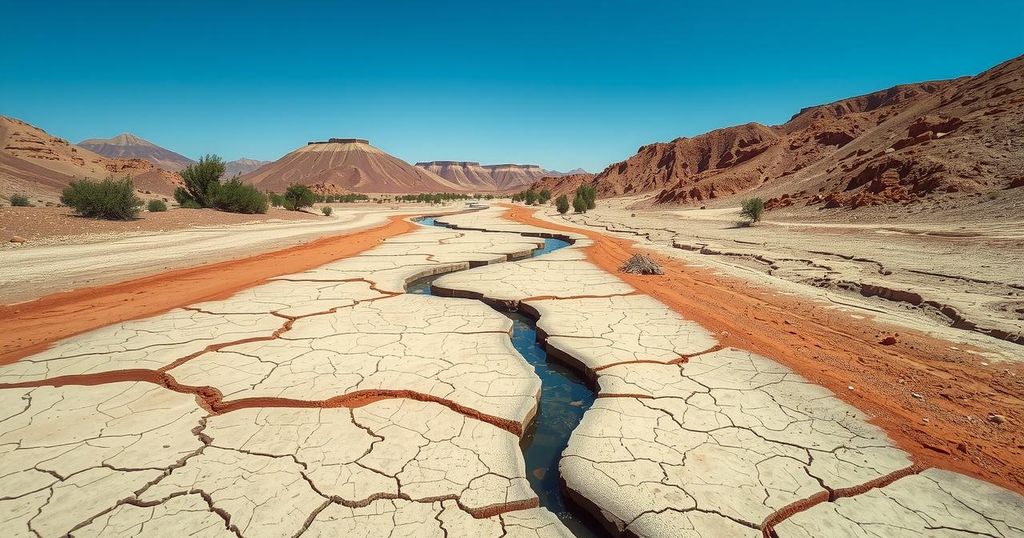Understanding South Africa’s Water Crisis: Key Insights and Statistics
South Africa faces a severe water crisis characterized by significant potable water loss, inadequate access for millions, and alarming health concerns. Key statistics reveal that 50% of potable water is lost, over 3 million citizens lack basic supply, and many face dire sanitation issues. This critical situation highlights the urgent need for enhanced awareness and effective water conservation strategies to ensure equitable access to this essential resource.
Water is recognized as an essential resource by the South African Department of Water and Sanitation, highlighting its critical nature as necessary for life. With World Water Day approaching, it is vital to examine South Africa’s pressing water crisis. The nation finds itself at a crossroads, necessitating greater awareness and appreciation for water conservation practices.
A staggering 50% of South Africa’s potable water is classified as Non-Revenue, indicating significant losses within the distribution system due to inefficiencies and leaks. In addition, over 3 million citizens are without access to basic water supply, illustrating a dramatic gap in water equity. Notably, 52% of individuals living in informal settlements around Johannesburg have resorted to constructing their own pit latrines due to inadequate sanitation options.
The consequences of water scarcity extend beyond personal hygiene and health. The United Nations Development Programme (UNDP) reports that globally, 443 million school days are forfeited annually due to illnesses associated with limited access to clean water. The South African Human Rights Commission further reveals that, sadly, 115 individuals across Africa succumb each hour to diseases stemming from poor sanitation and contaminated water sources.
South Africa faces climatic challenges as it experiences 40% less rainfall than the global average. Despite being a water-scarce country, average water usage in South Africa stands at 237 liters per person per day, exceeding the global average of 173 liters. The distribution of water usage in South Africa is notable, with 61% dedicated to agriculture, 27% to households, and 7% to industry, based on a report from the Council for Scientific and Industrial Research (CSIR).
According to the latest Blue Drop Report, only 120 of South Africa’s 144 Water Services Authorities (WSAs) demonstrated compliance with necessary water safety standards, while 24 WSAs made no efforts towards compliance at all. Alarmingly, 40 WSAs are currently in a critical state, further exacerbating the crisis.
The Water Services Act designates a minimum standard of 25 liters per person per day for basic water supply in South Africa. During the notorious ‘Day Zero’ water restrictions experienced in Cape Town, residents managed with an average of 50 liters per person per day—nearly double the minimum standard, underscoring the dire water situation.
In summary, South Africa’s water crisis poses significant challenges due to substantial losses in existing infrastructure, inadequate access for millions, and alarming health implications. As the nation grapples with climatic and systemic issues, it is imperative to enhance awareness of water conservation measures while advocating for solutions to ensure sustainable and equitable water access for all citizens. Understanding and addressing these pressing issues is crucial for safeguarding this invaluable resource for future generations.
Original Source: infrastructurenews.co.za




Post Comment